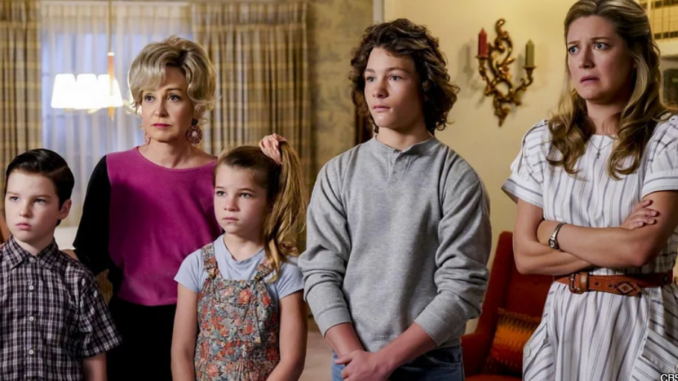
Why ‘Young Sheldon’ Should Have Let Missy Change Her Hair More Often
Raegan Revord portrayed Sheldon’s sharp-witted sister, Missy, for seven seasons on Young Sheldon. Yet, despite her rebellious personality, one thing about Missy remained surprisingly unchanged—her hair. Well, almost. Occasionally, she was allowed a ponytail, and for one episode, she even dyed her hair blonde. But for the most part, Missy’s hairstyle stayed the same, which felt at odds with her free-spirited nature.
Behind the scenes, Revord herself repeatedly asked for a haircut, only to be denied for four years. It wasn’t until Season 6—after she experienced a traumatic car accident in real life—that she finally got her wish. Following much deliberation, the showrunners allowed her to cut her hair.
In a 2023 interview with Entertainment Tonight, Revord recalled the emotional moment:
“They called me over and said, ‘Hey, we have some news for you.’ Then my hair person walked in, and I was like, ‘No, no, no, no, no. This is not happening!’ But they told me, ‘You get to cut your hair.’ Now I have short hair, and I love it so much. I got Van Leeuwen [ice cream] and a haircut—what more can you ask for?”
Missy’s shorter hair debuted in Season 6, Episode 18, Little Green Men and a Fella’s Marriage Proposal. But even then, the change was relatively subtle—certainly nothing as drastic as Penny’s (Kaley Cuoco) controversial pixie cut in The Big Bang Theory Season 8, which sparked backlash from some fans.
The Big Bang Theory Rule That Almost Never Breaks
The hesitance to alter Missy’s hair stems from a long-standing rule imposed by Big Bang Theory creator Chuck Lorre: major cast members should avoid drastic hairstyle changes. Penny’s pixie cut was an exception—and one that caused behind-the-scenes tension.
In The Big Bang Theory: The Definitive, Inside Story of the Epic Hit Series (2022), Lorre explained his reasoning:
“The audience had become infatuated with the character—not just their behavior, flaws, and strengths, but also their appearance. They became iconic, and disregarding that audience attachment was a mistake. I witnessed it firsthand. It would’ve been the same if Johnny [Galecki] had shaved his head at the wrap party. We’re all in this together!”
While Lorre’s approach ensures visual consistency, it also limits one of TV’s most effective tools for storytelling—character evolution through hair and fashion.
Why Young Sheldon Should’ve Let Missy Evolve
Most sitcoms embrace hairstyle changes as a reflection of personal growth. Scrubs did this brilliantly with Elliot (Sarah Chalke), whose hair evolved alongside her confidence and independence. Similarly, How I Met Your Mother used Lily’s (Alyson Hannigan) ever-changing hairstyles to subtly indicate different stages of her life, while Robin’s (Cobie Smulders) remained consistent, reflecting her steadfast personality.
Beyond sitcoms, dramas like Mad Men and Succession used hair as a visual storytelling device. Peggy Olson’s (Elisabeth Moss) evolving look mirrored her rise in the advertising world, while Shiv Roy’s (Sarah Snook) sleek, sharp bob in Season 2 symbolized her growing power and ambition.
By sticking so rigidly to its original character designs, both The Big Bang Theory and Young Sheldon missed an opportunity to add more depth through visual storytelling. While keeping a cartoon-like consistency works for some characters, a live-action teenage rebel like Missy could have benefited from a more dynamic look. Letting her break the Big Bang Theory hair rule might have made her character even more compelling.
